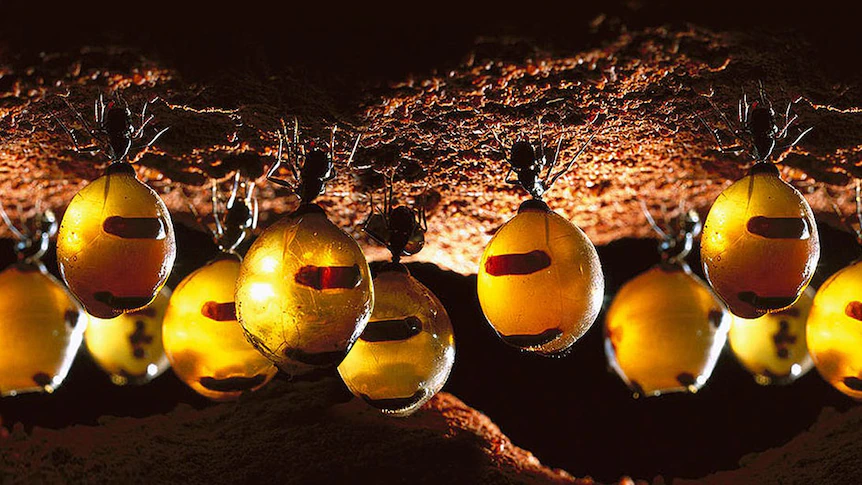
A unique type of ant in Australia produces honey that can kill bacteria and fungi, as revealed by a recent study from the University of Sydney. While this is a new discovery for Western science, Indigenous Australians have been using the honey from these ants, known as honeypot ants, for thousands of years in their food and medicine. The specific ant, Camponotu inflatus, is found in desert areas in Western Australia and the Northern Territory. Scientists are now hoping to identify the antimicrobial compounds in the ant honey to develop new antibiotics.
SEE ALSO: New Al could Identify Viral ‘Dark Matter’ of next Pandemic
Andrew Dong, a co-author of the study, expressed his fascination with the honeypot ant and its unique way of producing honey. The Indigenous people, like Danny Ulrich from the Tjupan language group, have been enjoying the sweet honey from these ants for thousands of years. They use it not only for its sweetness but also medicinally, such as for sore throats or as a topical ointment to prevent infections.
Following the Indigenous people’s knowledge, scientists studied the honey to understand its bacterial and fungal microbiome, the mix of good microbes that can combat harmful ones. They discovered that the honey’s microbiome can inhibit the growth of bacteria like golden staph, which can cause infections. Additionally, the ants’ honey can hinder the growth of fungi, Aspergillus and Cryptococcus, known to cause serious infections in people with weakened immune systems.
The researchers highlighted that the honey from the Australian honeypot ant has a different medicinal mechanism compared to manuka honey, a dark honey produced by bees in New Zealand known for its antimicrobial properties. The unique process of how these ants make honey involves special worker ants called ‘rotunos’ hanging upside down, being overfed, and regurgitating honey for the colony to use.
How, and why, does the Australian honeypot ant make honey?
- Some special ants in the honeypot ant group, making up half the workforce, have a unique role in the colony.
- These ants, called ‘rotunos,’ hang upside down in underground chambers within the ant nest.
- Other ants in the nest feed the rotunos a lot, filling them with nectar and sugary stuff.
- The abdomens of the rotunos become see-through and orange as they fill up with honey.
- The other ants in the nest take care of and clean the rotunos to protect their food supply.
- When the colony is low on food, the rotunos are gently stimulated so they release the honey for the other ants.
- Because of their size, the rotunos can’t move much and grow to be about the size of small grapes over time.



Comments